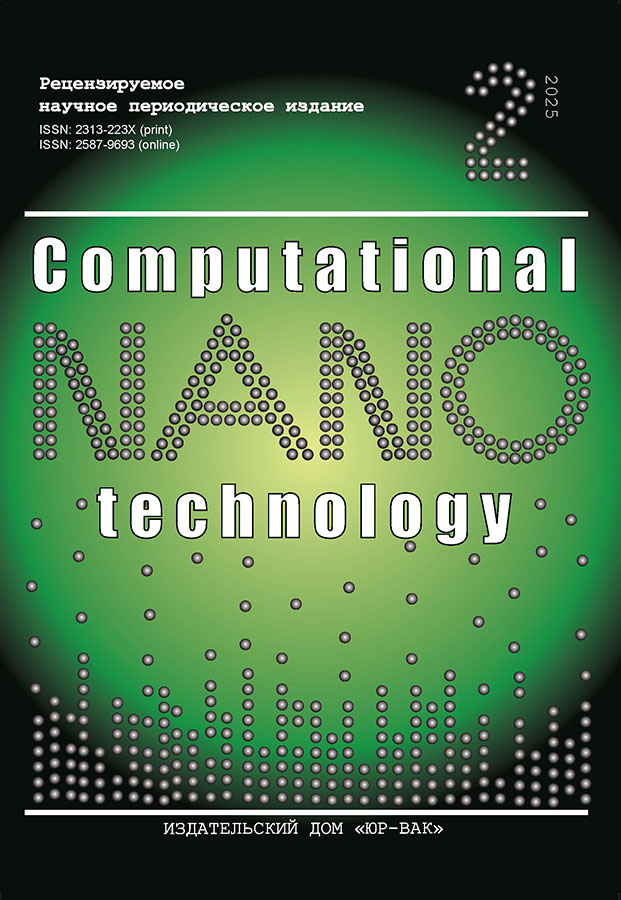Effective data model selection for infological entities in multimodel database systems
- Autores: Mishin N.S.1, Afanasyev G.I.1, Khayrullin R.Z.1,2
-
Afiliações:
- Bauman Moscow State Technical University
- Moscow State University of Civil Engineering (National Research University)
- Edição: Volume 12, Nº 2 (2025)
- Páginas: 58-67
- Seção: Mathematical and software of computеrs, complexes and computer networks
- URL: https://journals.eco-vector.com/2313-223X/article/view/689213
- DOI: https://doi.org/10.33693/2313-223X-2025-12-2-58-67
- EDN: https://elibrary.ru/QIICSF
- ID: 689213
Citar
Texto integral
Resumo
The article addresses the problem of selecting effective data models for infological entities in the context of designing multimodel databases. The focus is placed on the need for a systematic approach when modeling heterogeneous entities whose structure and behavior require different forms of representation. The study analyzes the characteristics of three widely used models – relational, graph, and multidimensional – in terms of their applicability to various types of infological entities. Key criteria influencing model selection are described, including data structure, interconnectivity, query patterns, mutability, scalability, and consistency requirements. A decision-making algorithm is proposed, based on analyzing entity characteristics and the system’s non-functional requirements. Particular attention is given to the advantages and challenges of multimodel solutions, as well as principles of coordinating different models within a unified architectural framework. The work aims to provide a methodological foundation for rational model selection and for enhancing the adaptability and sustainability of information systems.
Texto integral
Sobre autores
Nikita Mishin
Bauman Moscow State Technical University
Autor responsável pela correspondência
Email: stancuem@yandex.ru
ORCID ID: 0009-0008-3076-8076
Código SPIN: 2572-3667
postgraduate student, Department of Information Processing and Control Systems
Rússia, MoscowGennady Afanasyev
Bauman Moscow State Technical University
Email: gaipcs@bmstu.ru
Cand. Sci. (Eng.), Associate Professor; associate professor
Rússia, MoscowRustam Khayrullin
Bauman Moscow State Technical University; Moscow State University of Civil Engineering (National Research University)
Email: zrkzrk@list.ru
ORCID ID: 0000-0002-0596-4955
Código SPIN: 6631-0932
Dr. Sci. (Eng.), Senior Scientific Worker; Professor
Rússia, Moscow; MoscowBibliografia
- Aguilar Vera R. et al. NoSQL database modeling and management: A systematic literature review. Revista Facultad de Ingeniería. 2023. Vol. 32. No. 65 (32). Art. e16519. doi: 10.19053/01211129.v32.n65.2023.16519.
- Daniel G. et al. NeoEMF: A multi-database model persistence framework for very large models. Science of Computer Programming. 2017. No. 149. Pp. 9–14. doi: 10.1016/j.scico.2017.08.002.
- Gabrielsen R.H., Olesen O. The Concept of lineaments in geological structural analysis; Principles and methods: A review based on examples from Norway. Geomatics. 2024. No. 2 (4). Pp. 189–212. doi: 10.3390/geomatics4020011.
- Gerasimov V.R., Dusheba V.V. Analysis of optimizing database performance methods // Èlektronnoe modelirovanie. 2024. No. 6 (46). Pp. 43–54. doi: 10.15407/emodel.46.06.043.
- Gupta S., Pal S., Chakraborty M. A Study on various database models: Relational, graph, and hybrid databases. Singapore: Springer, 2019. Pp. 141–149. doi: 10.1007/978-981-15-0361-0_11.
- Jiri H. et al. Multidimensional database for crime prevention. IEEE, 2016. Pp. 242–247. doi: 10.1109/carpathiancc.2016.7501102.
- Labiadh M. et al. A microservice-based framework for exploring data selection in cross-building knowledge transfer. Service Oriented Computing and Applications. 2020. No. 2 (15). Pp. 97–107. doi: 10.1007/s11761-020-00306-w.
- Larson D., Chang V. A review and future direction of agile, business intelligence, analytics and data science. International Journal of Information Management. 2016. No. 5 (36). Pp. 700–710. doi: 10.1016/j.ijinfomgt.2016.04.013.
- Lebedev I.I., Ogorodnikov S.S. Storage and analysis of remote sensing data // Russian Engineering Research. 2024. No. 4 (44). Pp. 597–599. doi: 10.3103/s1068798x24700485.
- Lou J. et al. Willingness to pay for well-being housing attributes driven by design layout: Evidence from Hong Kong. Building and Environment. 2024. No. 251. Art. 111227. doi: 10.1016/j.buildenv.2024.111227.
- Margara A. et al. A model and survey of distributed data-intensive systems. ACM Computing Surveys. 2023. No. 1 (56). Pp. 1–69. doi: 10.1145/3604801.
- Molka-Danielsen J., Engelseth P., Wang H. Large scale integration of wireless sensor network technologies for air quality monitoring at a logistics shipping base. Journal of Industrial Information Integration. 2018. No. 10. Pp. 20–28. doi: 10.1016/j.jii.2018.02.001.
- Murri S. Optimising data modeling approaches for scalable data warehousing systems. International Journal of Scientific Research in Science, Engineering and Technology. 2023. Pp. 369–382. doi: 10.32628/ijsrset2358716.
- Pekaric I. et al. A systematic review on security and safety of self-adaptive systems. Journal of Systems and Software. 2023. No. 203. Art. 111716. doi: 10.1016/j.jss.2023.111716.
- Petkov Y.I., Chikalanov A.I. Innovative proposals for database storage and management. Mathematics and Informatics. 2022. No. 1 (LXV). Pp. 45–52. doi: 10.53656/math2022-1-6-inn.
- Sarawagi S. Models and indices for integrating unstructured data with a relational database. Berlin; Heidelberg: Springer, 2005. Pp. 1–10. doi: 10.1007/978-3-540-31841-5_1.
- Shah K., Patel K.S. A Survey on relational database based multi relational classification algorithms. International Journal of Scientific Research in Computer Science, Engineering and Information Technology. 2024. No. 2 (10). Pp. 140–147. doi: 10.32628/cseit2390656.
- Shahidinejad J., Kalantari M., Rajabifard A. 3D cadastral database systems – a systematic literature review. ISPRS International Journal of Geo-Information. 2024. No. 1 (13). P. 30. doi: 10.3390/ijgi13010030.
- Tan Z., Yue P., Gong J. An array database approach for earth observation data management and processing. ISPRS International Journal of Geo-Information. 2017. No. 7 (6). P. 220. doi: 10.3390/ijgi6070220.
- Zhang J. et al. Public cloud networks oriented deep neural networks for effective intrusion detection in online music education. Computers and Electrical Engineering. 2024. No. 115. Art. 109095. doi: 10.1016/j.compeleceng.2024.109095.
Arquivos suplementares












